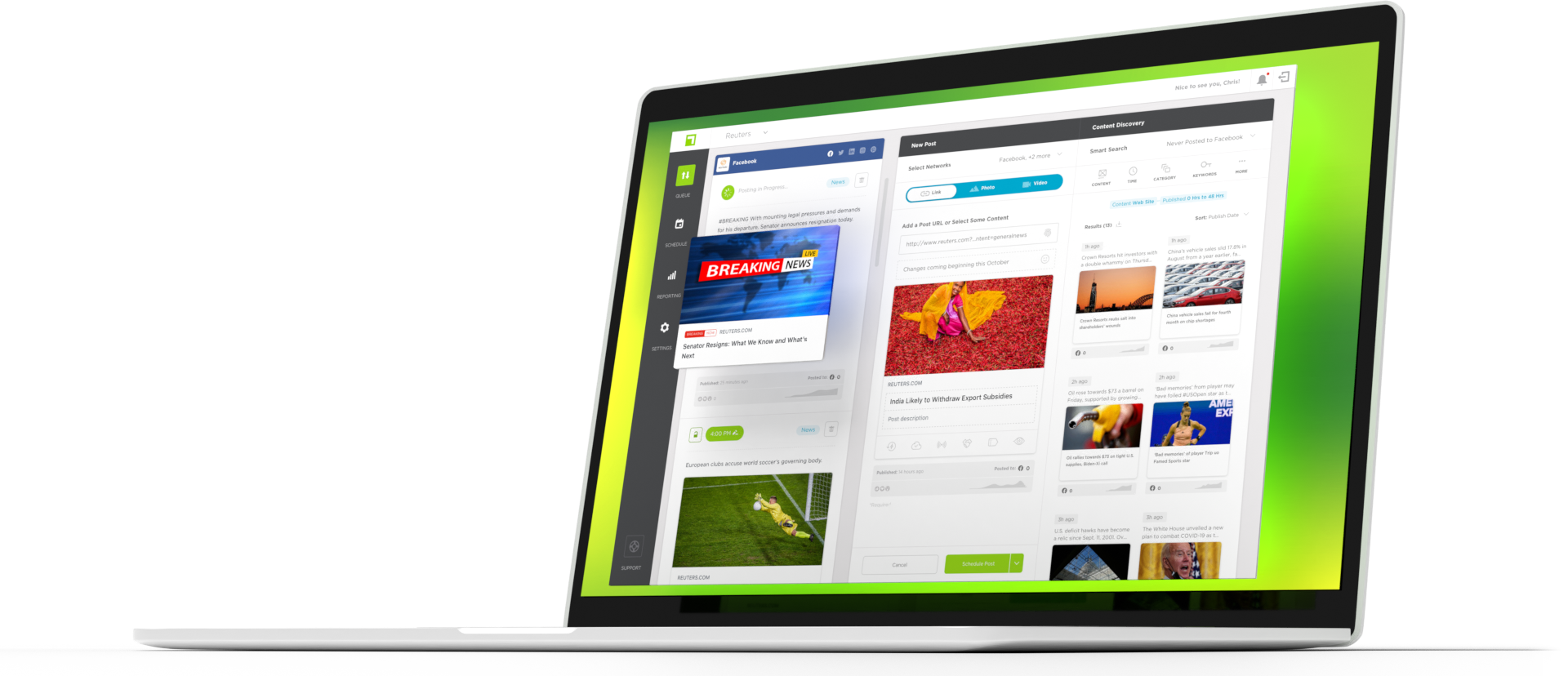If you’re a publisher, you already know that social media can be a powerful way to distribute your editorial content and increase traffic. A vast majority of Americans use at least one social network, according to Pew Research—and most of them get their news this way. Here’s the thing: Throwing up content on Facebook is not a social media strategy.
Here are nine reasons you may not be achieving your goals:
1. Your content is not optimized for social.
Social posts must be carefully designed—from the content selection to the image, it all matters. Write short, clear headlines. Make sure the image is appropriately sized for the platform. Provide an engaging social lead for the post instead of a truncated first paragraph. Use appropriate meta tags. If you have no idea how to do that, read 7 Common Meta Tag Mistakes that Publishers Make.
In short, every post should be appropriately packaged for the platform you are posting.
2. You don’t keep your fans engaged.
Do you know who your audience is? And how well do you understand each segment? The truth is that every group will have a range of interests. Your job as a publisher is to create content for all of them. Diverse content can help you reach different people within your audience. Be sure to include videos, images, links, text, Live videos, and anything relevant to your chosen platforms.
3. You aren’t repurposing your best content.
Evergreen recirculation can be an incredible traffic boost and lighten the posting load for your team. Do you have a recent backgrounder that can add depth to a breaking news story? If there’s a holiday coming, which were your best evergreen articles? Build an evergreen content bank and use it. If this process sounds overwhelming, this is what we do best. Sign up for a demo to hear how we can help you identify your best content and repost it.
4. You’re under-posting.
Don’t underuse your online real estate. Your team’s availability shouldn’t drive your social media schedule; it should be driven by when content is most likely to be read and shared. For example, nights and weekends are prime times for consumers’ social media usage, but many publishers slow down at this important time. AI posting can help make this solution happen.
5. You aren’t posting at the right time.
Optimizing your posting schedule is even more complicated than simply following the above guidelines—but it can be even more valuable if you do it right. Tools such as True Anthem’s artificial intelligence-powered social publishing platform let you identify optimal content, segment your audience and optimize posting schedules for different segments.
6. You don’t have the right balance between traffic acquisition and engagement strategies.
We suggest that publishers use a content distribution strategy that includes traffic acquisition and engagement. Traffic acquisition leads to revenue generation through the increased traffic generated to publishers’ owned media properties. Balancing traffic acquisition with engagement strategies such as post type variance will increase reach and audience affinity on Facebook and other platforms, ultimately driving more traffic to owned properties.
7. Your social media team needs help.
It can take as long as 20 minutes to publish a single Facebook post. If this seems crazy, think about the time it can take to resize images, write appropriate copy, log into the software, etc. The job has become more complex than dropping a link and hitting publish, and some social media teams can’t keep up. The good news is that machine learning can help your social media staff, freeing up time that they can use to focus on more valuable and strategic work.
8. You aren’t staying ahead of the Facebook News Feed algorithms changes.
Facebook changed its News Feed algorithm to prioritize posts from family and friends over publisher content—and publishers’ stories achieved lower reach as a result. In January, Facebook made another tweak in an attempt to surface “authentic” stories, and in May, it reduced links to “low-quality web experiences.” This regular tweaking of Facebook’s algorithm means publishers need to work even harder, providing the best experience possible with the tools available. Also, see #7.
9. You don’t have an influencer strategy.
Influencers—independent content creators with impactful social media followings—have become a piece of the marketing puzzle. It’s not enough to hire a couple of hundred influencers to link to a piece of content. To make influencer campaigns valuable, the publisher must choose influencers relevant to both their brand and the influencer’s brand. Choose your influencers carefully and make sure that the relationship is mutually beneficial.
10. You are not including enough links in your social media posts
It’s important to engage your audience and generate conversations around your brand. Link posts are not dead! They get less engagement on most platforms, but they’re still an important part of a well-rounded social strategy.
Links serve a couple purposes:
- Even with a smaller reach, they drive more off-site clicks than an image or video can.
- They allow your social media to serve as a hub, letting your users know what you can offer beyond your social channels
- Linking your email list, website, blog, shop, etc can help you with conversations. If you get signups in other areas, you own that information in a way that you don’t own your social audience.
11. You don’t have a social media posting frequency strategy
Knowing how often to post on social media platforms can be tricky. A social media posting frequency strategy is an important element to gain more website traffic, build relationships with customers and drive engagement. From engagement rates and reach optimization to platform-specific best practices, publishers have a lot to consider when deciding how often their audience wants to hear from them.
Don’t make these social media mistakes. Handling all this may seem like a daunting task, but intelligent automation tools like True Anthem’s, which uses AI to determine what content to post and when to post it, can relieve the pain and drive social media traffic that matters. Contact us for a demo!

